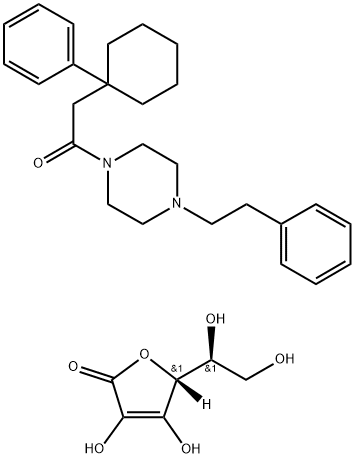MOPS
Synonym(s):3-(N-Morpholino)propanesulfonic acid;3-Morpholinopropane sulfonic acid;4-Morpholinepropanesulfonic acid;MOPS;MOPS, Free Acid, Molecular Biology Grade - CAS 1132-61-2 - Calbiochem
- CAS NO.:1132-61-2
- Empirical Formula: C7H15NO4S
- Molecular Weight: 209.26
- MDL number: MFCD00006183
- EINECS: 214-478-5
- SAFETY DATA SHEET (SDS)
- Update Date: 2025-12-17 09:49:16

What is MOPS?
Chemical properties
White/clear crystalline powder
The Uses of MOPS
3-(N-Morpholino)propanesulfonic acid or MOPS due to its inert nature is a preferred and widely used buffer in many biochemical studies.
MOPS has been used as:
a cell culture additive component in lentiviral particle production.
as a buffering agent in microbial growth medium and nuclei extraction buffer.
as a component of Roswell Park Memorial Institute (RPMI) medium for diluting fungal inoculum.
as a buffer in capillary-zone electrophoresis to test performance.
for the dilution of proteins from algal samples.
The Uses of MOPS
MOPS acts as a multi-purpose buffering agent used in various biological research.
What are the applications of Application
MOPS solution is a morpholino propanesulfonic acid buffer
What are the applications of Application
MOPS, Free Acid is an MES structural analog and buffer agent with a pKa close to physiological pH.
Definition
ChEBI: 3-(N-morpholino)propanesulfonic acid is a Good's buffer substance, pKa = 7.2 at 20 ℃. It is a member of morpholines, a MOPS and an organosulfonic acid. It is a conjugate acid of a 3-(N-morpholino)propanesulfonate. It is a tautomer of a 3-(N-morpholiniumyl)propanesulfonate.
General Description
3-(N-Morpholino)propane sulfonic acid (MOPS) is an N-substituted amino sulfonic acid with a morpholinic ring. MOPS is capable of buffering within a pH range of 6.5-7.9. MOPS is widely used in biological and biochemical studies due to its inert properties. It does not interact with any metal ions in solutions and has significant metal-buffer stability especially with copper (Cu), nickel (Ni), manganese (Mn), zinc (Zn), cobalt (Co) ions. MOPS buffer maintains the pH of the mammalian cell culture medium. MOPS functions to maintain pH in denaturing gel electrophoresis of RNA. MOPS can modify lipid interactions and influence the thickness and barrier properties of membranes. MOPS interacts with bovine serum albumin and stabilizes the protein. Hydrogen peroxide oxidizes MOPS slowly to N-oxide form.
Flammability and Explosibility
Not classified
Synthesis
Morpholine and 1,3-Propanesultone are added to absolute ethanol for reaction. The crude product synthesized is purified to obtain 3-Morpholinopropanesulfonic acid.
Properties of MOPS
| Melting point: | 277-282 °C |
| Density | 1.3168 (rough estimate) |
| vapor pressure | 0Pa at 25℃ |
| refractive index | 1.6370 (estimate) |
| Flash point: | 116 °C |
| storage temp. | room temp |
| solubility | H2O: 1 M at 20 °C, clear |
| form | Powder/Solid |
| color | White |
| Odor | Odorless |
| PH | 2.5-4.0 (25℃, 1M in H2O) |
| pka | 7.2(at 25℃) |
| PH Range | 6.5 - 7.9 |
| Water Solubility | 1000 g/L (20 ºC) |
| λmax | λ: 260 nm Amax: 0.020 λ: 280 nm Amax: 0.015 |
| Merck | 14,6265 |
| BRN | 1106776 |
| Stability: | Stable. Incompatible with strong bases, strong oxidizing agents. |
| CAS DataBase Reference | 1132-61-2(CAS DataBase Reference) |
| EPA Substance Registry System | 4-Morpholinepropanesulfonic acid (1132-61-2) |
Safety information for MOPS
| Signal word | Warning |
| Pictogram(s) |
 Exclamation Mark Irritant GHS07 |
| GHS Hazard Statements |
H315:Skin corrosion/irritation H319:Serious eye damage/eye irritation H335:Specific target organ toxicity, single exposure;Respiratory tract irritation |
| Precautionary Statement Codes |
P261:Avoid breathing dust/fume/gas/mist/vapours/spray. P304+P340:IF INHALED: Remove victim to fresh air and Keep at rest in a position comfortable for breathing. P305+P351+P338:IF IN EYES: Rinse cautiously with water for several minutes. Remove contact lenses, if present and easy to do. Continuerinsing. P405:Store locked up. |
Computed Descriptors for MOPS
| InChIKey | DVLFYONBTKHTER-UHFFFAOYSA-N |
MOPS manufacturer
JSK Chemicals
New Products
4,4-Difluoropiperidine hydrochloride tert-butyl 9-methoxy-3-azaspiro[5.5]undecane-3-carboxylate Indole Methyl Resin N-Isopropylurea N,N-Dicyclohexylcarbodiimide(DCC) MELDRUMS ACID 5-METHYLISOXAZOLE-4-CARBOXYLIC ACID Magnessium Bis glycinate Zinc ascorbate 1-bromo-2-butyne 2-acetamidophenol 9(10H)-anthracenone Erythrosin B, 4-Piperidinopiperidine 2-((4-morpholinophenylamino) (methylthio) methylene) malononitrile 2,4-dihydroxybenzaldehyde 3-(4-morpholinophenylamino)-5-amino-1H-pyrazole-4-carbonitrile Methyl 2-methylquinoline-6-carboxylate 2,6-dichloro-4-nitropyridine 4-Bromo-2-chlorobenzonitrile 2-(benzylamino)acetic acid hydrochloride 4-(tert-Butoxycarbonylamino)but- 2-ynoic acid 3,4-dihydro-2H-benzo[b][1,4]dioxepine 1-Phenyl-1-cycloprppanecarboxylicacidRelated products of tetrahydrofuran








You may like
-
 MOPS Buffer CAS 1132-61-2View Details
MOPS Buffer CAS 1132-61-2View Details
1132-61-2 -
 MOPS Buffer for molecular biology CAS 1132-61-2View Details
MOPS Buffer for molecular biology CAS 1132-61-2View Details
1132-61-2 -
 MOPS Buffer extrapure CAS 1132-61-2View Details
MOPS Buffer extrapure CAS 1132-61-2View Details
1132-61-2 -
 Morpholino propane sulphonic acid, 99% CAS 1132-61-2View Details
Morpholino propane sulphonic acid, 99% CAS 1132-61-2View Details
1132-61-2 -
![3-Morpholinopropanesulfonic Acid [Good's buffer component for biological research] CAS 1132-61-2](https://img.chemicalbook.in//Content/image/CP5.jpg) 3-Morpholinopropanesulfonic Acid [Good's buffer component for biological research] CAS 1132-61-2View Details
3-Morpholinopropanesulfonic Acid [Good's buffer component for biological research] CAS 1132-61-2View Details
1132-61-2 -
 MOPS CAS 1132-61-2View Details
MOPS CAS 1132-61-2View Details
1132-61-2 -
 MOPS, 3-(N-Morpholino)propanesulfonic acidView Details
MOPS, 3-(N-Morpholino)propanesulfonic acidView Details
1132-61-2 -
 MOPS Buffer for molecular biology, 99%View Details
MOPS Buffer for molecular biology, 99%View Details
1132-61-2
